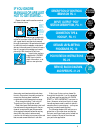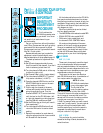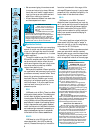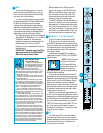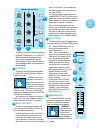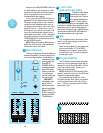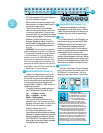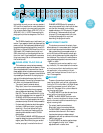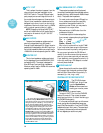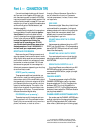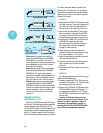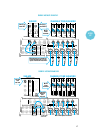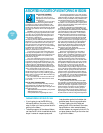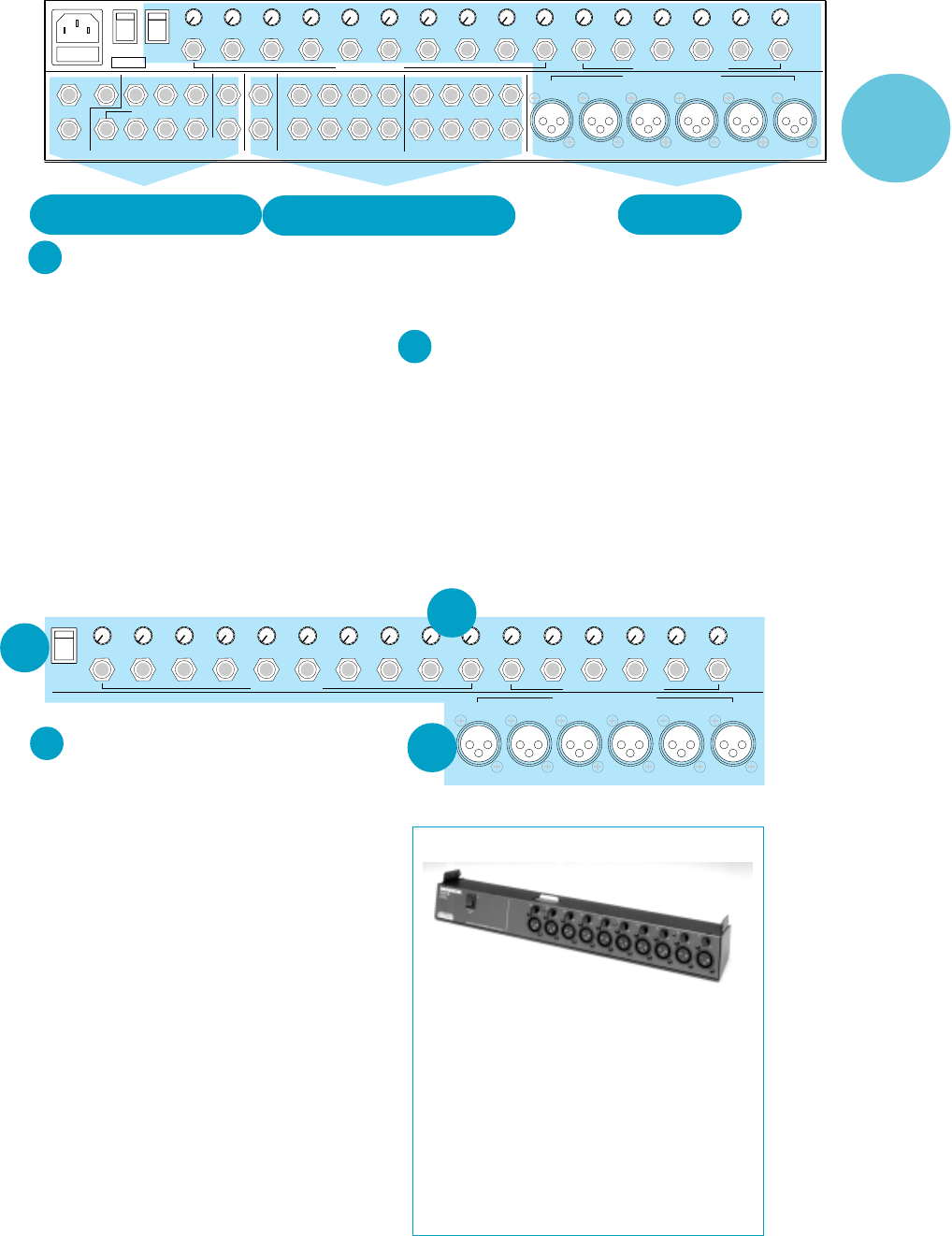
11
INPUT SENSITIVITY CONTROLS
The first set of items on our tour are the
sensitivity controls for the 16 input channels.
These knobs adjust the input sensitivity of the
mic and line inputs so signals from the out-
side world are brought into the mixer at
optimum internal operating levels. INPUT
SENSITIVITY controls for channels 1–6 have
up to 40dB of gain for line inputs and 50dB for
XLR inputs; controls for channels 7–16 have
25dB of gain. Note that all SENSITIVITY con-
trols are marked with a –10 setting. This is
the amount of gain needed to raise –10dBv
operating level equipment up to professional
+4dB levels.
MICROPHONE INPUTS (Channels1–6)
We use true phantom-powered, balanced in-
puts just like the big, studio mega-consoles for
the same reason they do: This kind of circuit is ex-
cellent at rejecting hum and noise. You can plug
in any kind of professional microphone that has a
standard “XLR-type male” mic connector, an im-
pedance of between 50 ohms and 600 ohms.
If you wire your own male XLR’s, connect them
like this:
Pin 2= Positive (+ or hot)
Pin 3 = Negative ( – or cold)
Pin 1 = Shield (ground)
Basically, Inputs 1–6 will handle any kind of
mic level you can toss at them. Professional
ribbon, dynamic and condenser mics will all
sound excellent through these inputs —
especially if you follow the Level Setting in-
structions on page 19. Lower-cost electret-type,
unbalanced mics should be plugged into Inputs
7–16 but will require additional gain and thus
not be as quiet.
• When using microphone XLR input jacks,
you will get 10dB more gain than what the
SENSITIVITY trim marking indicates.
PHANTOM POWER SWITCH
What is Phantom Power? No, it’s not the arch
enemy of Captain America or anything like that.
Most modern professional condenser mics are
equipped for Phantom Power, which lets the
mixer send DC power to the mic’s electronics
over the same wires that carry audio (hence
“phantom” since the DC voltage is “unseen” by dy-
namic and ribbon mics which don’t need external
power and are unaffected by it anyway).
Part 3 — INPUT/OUTPUT POD
INPUTS
+4 –25
13
U
–10
•
UNBALANCED LINE INPUTS
+4 –25
14
U
–10
•
+4 –25
15
U
–10
•
+4 –25
16
U
–10
•
LEFT
RIGHT
BUSS INSERT
LEFT
RIGHT
ALT 3/4 OUT
3
6
2
5
1
4
MONITOR
LEFT
RIGHT
AUX OUTPUTSMONOBAL MAIN OUT
MAINS PHANTOM
+48V
6 5 4 3 2 1
LOW Z BALANCED MICROPHONE INPUTS
BALANCED/UNBALANCED LINE INPUTS
+4 –25
7
U
–10
•
+4 –40
6
U
–10
•
+4 –40
5
U
–10
•
+4 –40
4
U
–10
•
+4 –40
4
U
–10
•
+4 –40
4
U
–10
•
+4 –40
4
U
–10
•
SENSITIVITY
ADD 8dB FOR
MIC INPUTS
4
8
+4 –25
8
U
–10
•
3
7
2
6
1
5
+4 –25
9
U
–10
•
+4 –25
10
U
–10
•
+4 –25
11
U
–10
•
+4 –25
12
U
–10
•
CHANNEL ACCESS TIP=OUT RING=IN
4321
AUX RETURNS
L
R
OUTPUTS/SENDS
RETURNS/INSERTS
19
+4 –40
13
U
–10
•
UNBALANCED LINE INPUTS
+4 –40
14
U
–10
•
+4 –40
15
U
–10
•
+4 –40
16
U
–10
•
PHANTOM
5 4 3 2 1
LOW Z BALANCED MICROPHONE INPUTS
BALANCED/UNBALANCED LINE INPUTS
+4 –40
7
U
–10
•
+4 –40
6
U
–10
•
+4 –40
5
U
–10
•
+4 –40
4
U
–10
•
+4 –40
3
U
–10
•
+4 –40
2
U
–10
•
+4 –40
1
U
–10
•
SENSITIVITY
ADD 8dB FOR
MIC INPUTS
+4 –40
8
U
–10
•
+4 –40
9
U
–10
•
+4 –40
10
U
–10
•
+4 –40
11
U
–10
•
+4 –40
12
U
–10
•
6
21
20
21
20
19
NEED MORE THAN SIX MIC INPUTS?
We have determined that six mic inputs takes
care of most users’ needs. But if you’re miking a
complex drum kit, lots of vocalists or a complete
musical (our mixers have been used in several hit
Broadway shows, by the way), you can add the
XLR10 Mic Input Expander. It adds 10 more high
quality discrete, balanced preamplifiers just like
the ones on the CR-1604’s Channels 1–6. The unit
installs in minutes and forms an integral, struc-
tural part of the mixer (in pod-to-back or tabletop
configuration, it doesn’t take up any more rack
space either). Plus, you can still use the line in-
puts on the CR-1604’s Channel’s 7–16! Such a
deal. Ask your Mackie dealer for more details.
INPUT
OUTPUT
POD



